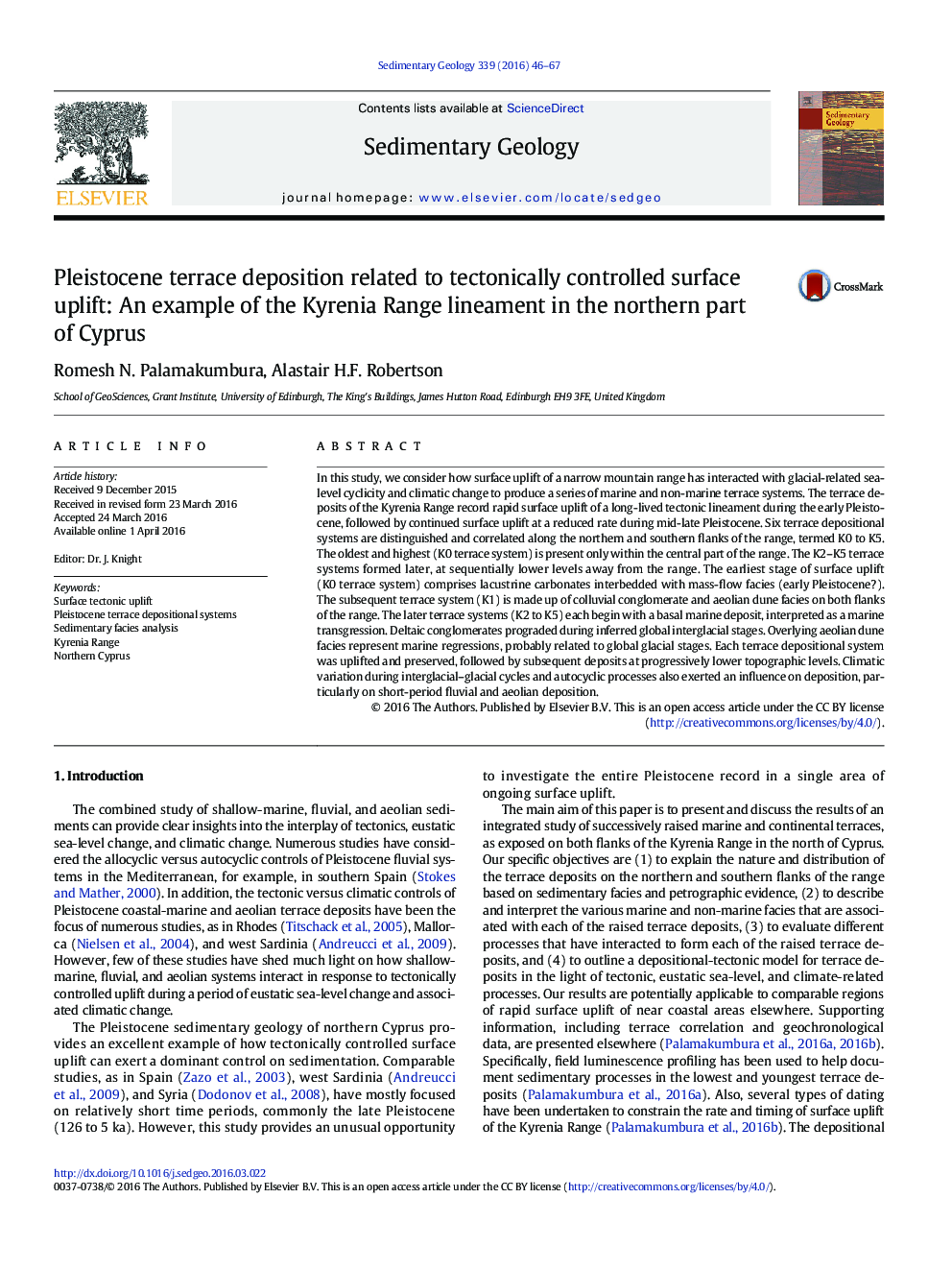| کد مقاله | کد نشریه | سال انتشار | مقاله انگلیسی | نسخه تمام متن |
|---|---|---|---|---|
| 6433149 | 1636024 | 2016 | 22 صفحه PDF | دانلود رایگان |
- A rising tectonic lineament was characterized by cyclical deposition of shallow-marine to non-marine facies, preserved as Pleistocene raised terraces.
- Six-terrace depositional systems are identified and correlated along the flanks of the Kyrenia Range, termed K0 to K5, based on height above sea-level, sedimentary relationships and facies.
- During early stage surface uplift lacustrine sediments accumulated in small tectonically influenced intramontane basins.
- Dramatic tectonic uplift (Early to Mid-Pleistocene) resulted in dramatic slope wasting and genesis of megabreccia and debris-flow deposits.
- Ongoing but slower tectonic uplift (Late Pleistocene) interacted with glacio-eustasy cyclicity and related climatic change to create a flight of marine to non-marine terraces on the N flank of the range and fluvial terraces on the S flank.
In this study, we consider how surface uplift of a narrow mountain range has interacted with glacial-related sea-level cyclicity and climatic change to produce a series of marine and non-marine terrace systems. The terrace deposits of the Kyrenia Range record rapid surface uplift of a long-lived tectonic lineament during the early Pleistocene, followed by continued surface uplift at a reduced rate during mid-late Pleistocene. Six terrace depositional systems are distinguished and correlated along the northern and southern flanks of the range, termed K0 to K5. The oldest and highest (K0 terrace system) is present only within the central part of the range. The K2-K5 terrace systems formed later, at sequentially lower levels away from the range. The earliest stage of surface uplift (K0 terrace system) comprises lacustrine carbonates interbedded with mass-flow facies (early Pleistocene?). The subsequent terrace system (K1) is made up of colluvial conglomerate and aeolian dune facies on both flanks of the range. The later terrace systems (K2 to K5) each begin with a basal marine deposit, interpreted as a marine transgression. Deltaic conglomerates prograded during inferred global interglacial stages. Overlying aeolian dune facies represent marine regressions, probably related to global glacial stages. Each terrace depositional system was uplifted and preserved, followed by subsequent deposits at progressively lower topographic levels. Climatic variation during interglacial-glacial cycles and autocyclic processes also exerted an influence on deposition, particularly on short-period fluvial and aeolian deposition.
Journal: Sedimentary Geology - Volume 339, 15 June 2016, Pages 46-67
